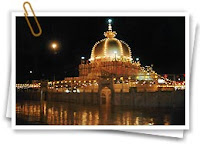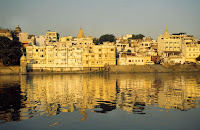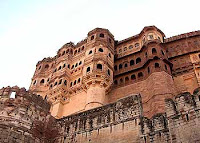 Mount Abu, the only hill resort of Rajasthan spreads out along a 1,200 mtr high plateau in the southern part of the state, adjacent to the Gujarat border. A popular hill station of India, Mount Abu provides a pleasant retreat to the people living in the plains of Rajasthan and Gujarat. Apart from India visitors, Mount Abu is visited by large number of foreign tourists every year.
Mount Abu, the only hill resort of Rajasthan spreads out along a 1,200 mtr high plateau in the southern part of the state, adjacent to the Gujarat border. A popular hill station of India, Mount Abu provides a pleasant retreat to the people living in the plains of Rajasthan and Gujarat. Apart from India visitors, Mount Abu is visited by large number of foreign tourists every year. Mount Abu stretches along a hilly plateau about 22 km long and six km wide and it is lovely place to wander around at leisure. The main town extends along the road from Abu Road to the Nakki Lake and the nearest railway station is located 27 kms away at Abu Road. Mount Abu also has a number of noted temples including the Dilwara group of Jain temples. Dilwara Jain Temples is a very important pilgrimage centre for Jains and the marble carvings of the temples are considered among the best in Rajasthan.
Nakki Lake is another major attraction of Mount Abu which is surrounded by hills, parks and unique rock formations namely Toad Rock, Nandi Rock and Nun Rock. Virtually situated in the centre of the town, the Nakki Lake derives its name from the legend that it was scooped out by a god using only his nails (nakh). Nakki Lake is the centre of all activity in Mount Abu and here you will find juice stalls, ice cream parlours, balloon vendors, shops and small food stalls. Beside the lake, the Raghunath temple stands which was built in the 14th century.
Just 3 kms north of town is the Adhar Devi Temple. Dedicated to goddess Durga the temple is built in a natural cleft in the rock. Brahma Kumaris Spiritual University and Museum is another highlight of Mount Abu. Apart from these, Mount Abu has a number of viewpoints where visitors stroll out every evening to catch the setting sun, the food stall and the entertaining activities. Some noted viewpoints are Sunset Point and Honeymoon Point.
For more info visit :
http://daysatmountabu.blogspot.com/
http://dilwarajaintemples.blogspot.com




 Rajasthan, second largest city after Jaipur, Jodhpur stands at the edge of the Great Indian Thar Desert. Jodhpur was founded in 1459 A.D by Rao Jodha, a chief of the Rajput clan known as the Rathores. Once the Rathore kingdom was also known as Marwar, the ‘Land of Death.’ The old city of Jodhpur is encircled by a massive 10 km long wall that was built about a century after the city was founded.
Rajasthan, second largest city after Jaipur, Jodhpur stands at the edge of the Great Indian Thar Desert. Jodhpur was founded in 1459 A.D by Rao Jodha, a chief of the Rajput clan known as the Rathores. Once the Rathore kingdom was also known as Marwar, the ‘Land of Death.’ The old city of Jodhpur is encircled by a massive 10 km long wall that was built about a century after the city was founded.